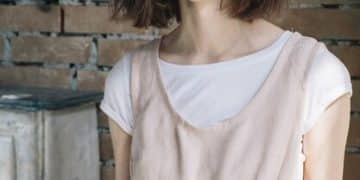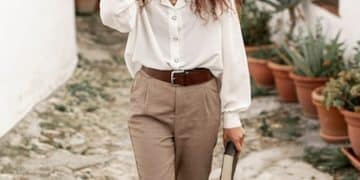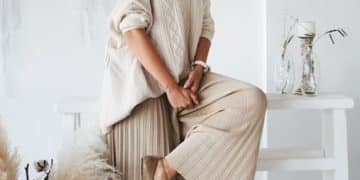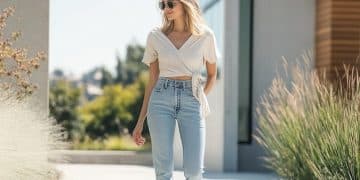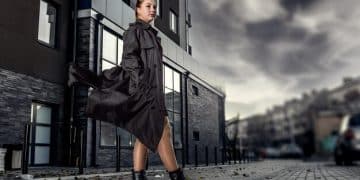Wardrobe Rehab: Declutter & Rediscover Your Casual Style
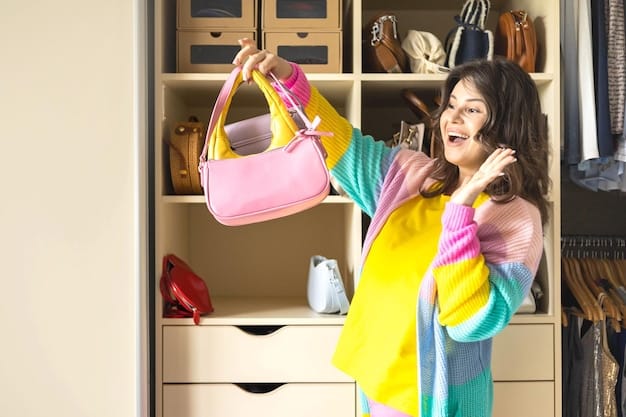
Wardrobe rehab involves decluttering your closet to rediscover your casual style potential, creating outfits you love, saving time, and promoting a sustainable lifestyle by making the most of what you already own.
Is your closet bursting at the seams, yet you feel like you have nothing to wear? It’s time for a wardrobe rehab: declutter your closet and rediscover your casual style potential, leading to a more streamlined and satisfying everyday look.
Why a Wardrobe Rehab is Essential for Your Casual Style
A wardrobe rehab isn’t just about cleaning out your closet; it’s a strategic process to redefine your personal style and make getting dressed each day an enjoyable experience. It’s about creating a functional space that reflects your current lifestyle and helps you express yourself effortlessly.
By taking the time to curate a wardrobe that you genuinely love, you’ll eliminate the stress of decision fatigue and discover new outfit combinations you never knew existed.
The Benefits of Decluttering
Decluttering is the first crucial step in any successful wardrobe rehab. It allows you to gain clarity about what you own and what truly aligns with your style preferences.
- **Saves Time:** A well-organized closet makes it easy to find what you need, reducing the time spent searching for outfits.
- **Reduces Stress:** Eliminating clutter minimizes decision fatigue and makes getting dressed less overwhelming.
- **Enhances Style:** By focusing on clothes you love and that fit well, you’ll create a more cohesive and stylish wardrobe.
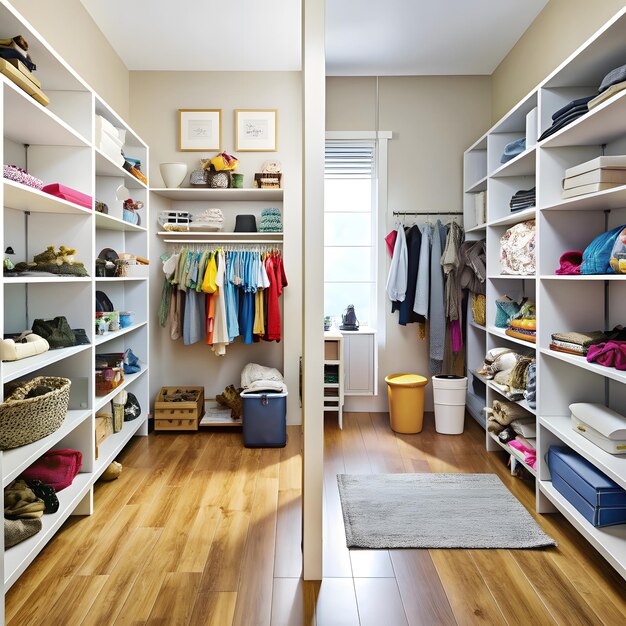
Ultimately, committing to a wardrobe rehab is an investment in yourself. It’s about simplifying your life, boosting your confidence, and expressing your authentic style every single day.
Step-by-Step Guide to Decluttering Your Closet
Starting a wardrobe detox can feel daunting, but breaking it down into manageable steps will make the process much smoother and more effective. These stages will help you to approach your closet with intention and achieve lasting results.
Follow these steps to efficiently declutter your closet and set the stage for a more stylish and functional wardrobe.
Emptying Your Closet
Remove everything from your closet and lay it out on your bed or floor. This allows you to see the full extent of your wardrobe and assess each item without any visual distractions.
Sorting and Categorizing
Divide your clothes into categories such as tops, bottoms, dresses, outerwear, and accessories. This makes it easier to evaluate each item and identify duplicates or unnecessary pieces.
- **Keep:** Items you love, fit well, and wear regularly.
- **Donate/Sell:** Clothes in good condition that no longer fit or align with your style.
- **Trash:** Items that are damaged, stained, or beyond repair.
After sorting, place the “keep” pile back into your closet in an organized manner. For the donate/sell pile, consider local charities, consignment shops, or online platforms to give your clothes a new life.
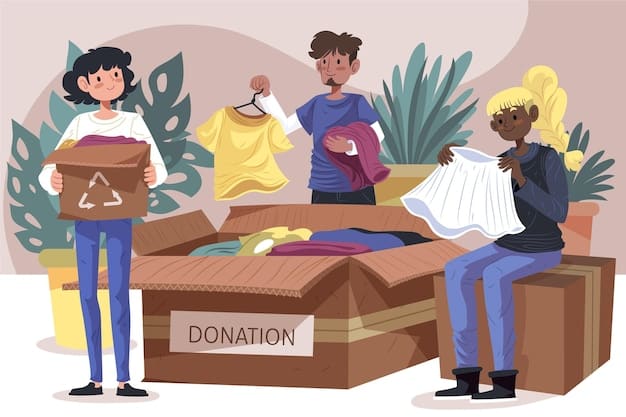
Rediscovering Your Casual Style
Once your closet is decluttered, the real fun begins: rediscovering your casual style. This involves understanding your personal preferences, identifying wardrobe gaps, and creating outfits that reflect your unique personality.
With thoughtful planning and a bit of creativity, you can develop a casual style that is both comfortable and stylish.
Understanding Your Style Preferences
Think about the colors, patterns, and silhouettes that you are naturally drawn to. Consider the types of outfits that make you feel confident and comfortable.
Identifying Wardrobe Gaps
Determine which essential pieces are missing from your wardrobe. This could include basic t-shirts, versatile jeans, classic sneakers, or stylish outerwear.
- **Invest in Basics:** High-quality basic pieces are the foundation of any casual wardrobe.
- **Accessorize Wisely:** Scarves, hats, and jewelry can elevate your look without requiring a complete outfit overhaul.
- **Mix and Match:** Experiment with different combinations to discover new and exciting outfit possibilities.
Reimagining your wardrobe can be an empowering process, allowing you to express your unique style with confidence and creativity.
Organizing Your Closet for Maximum Efficiency
The key to maintaining a streamlined and stylish wardrobe is to organize your closet in a way that maximizes space and accessibility. An organized closet not only makes it easier to find what you need but also prevents clutter from accumulating over time.
Here are some tips for optimizing your closet organization for improved efficiency:
Color-Coding Your Clothes
Arrange your clothes by color to create a visually appealing and easily navigable closet. This makes it simple to find specific items and create coordinated outfits.
Using Matching Hangers
Invest in a set of matching hangers to create a uniform and organized look. Thin, space-saving hangers are particularly useful for maximizing closet space.
- **Fold Strategically:** Use the KonMari folding method to maximize drawer space and keep clothes wrinkle-free.
- **Utilize Vertical Space:** Install shelves or hanging organizers to make the most of vertical space.
- **Store Seasonal Items:** Pack away out-of-season clothes to free up space and reduce clutter.
A well-organized closet will not only save you time but also inspire you to experiment with different outfits and rediscover the joy of dressing each day.
Creating Versatile Casual Outfits
The goal of a wardrobe rehab is to create a collection of versatile pieces that can be mixed and matched to create a variety of stylish casual outfits. This not only simplifies your daily dressing routine but also maximizes the value of your wardrobe.
With a few key pieces, you can create endless outfit possibilities for any occasion.
The Power of Basics
Invest in high-quality basic pieces such as a white t-shirt, black leggings, and denim jacket. These items can be dressed up or down and paired with virtually anything in your closet.
Layering Techniques
Master the art of layering to add depth and interest to your outfits. Experiment with cardigans, blazers, and scarves to create unique and stylish looks.
- **Dress Up with Accessories:** Elevate your casual outfits with statement jewelry, stylish bags, and fashionable shoes.
- **Mix Textures:** Combine different textures such as cotton, denim, and leather to add visual interest to your looks.
- **Play with Proportions:** Experiment with different silhouettes to find what flatters your body shape and showcases your personal style.
Creating versatile casual outfits is about embracing creativity and having fun with your wardrobe. Don’t be afraid to experiment and discover new combinations that make you feel confident and stylish.
Maintaining Your Wardrobe After the Rehab
Once your wardrobe has undergone a successful rehab, the key is to maintain its streamlined and organized state. This involves implementing sustainable habits and being mindful of your purchasing decisions.
With consistent effort, you can ensure that your wardrobe remains clutter-free and continues to reflect your evolving style.
Regular Decluttering
Set aside time every few months to declutter your closet and remove any items that you no longer wear or love. This prevents clutter from accumulating and keeps your wardrobe fresh.
Mindful Shopping Decisions
Before making a new purchase, ask yourself if the item truly aligns with your style and fills a specific need in your wardrobe. Avoid impulse buys and focus on investing in high-quality pieces that you will wear for years to come.
- **One In, One Out:** For every new item you bring into your wardrobe, commit to removing one old item.
- **Proper Storage:** Store your clothes properly to prevent damage and extend their lifespan.
- **Repair and Alter:** Instead of discarding damaged clothes, consider repairing or altering them to give them a new life.
Embracing sustainable habits is not only good for the environment but also ensures that your wardrobe remains intentional and reflective of your personal style.
| Key Point | Brief Description |
|---|---|
| ⏱️ Saves Time | Organized closets make outfit selection quicker. |
| 👗 Enhances Style | Focus on clothes you love & that fit well. |
| ♻️ Sustainable Habits | Mindful purchases & regular decluttering. |
| ✨ Reduces Stress | Less clutter minimizes decision fatigue. |
FAQ
▼
Ideally, declutter your wardrobe every season (every three months) to keep it fresh and manageable. This ensures you only have clothes you wear regularly and are suitable for the current weather.
▼
Donate gently-used clothing to local charities or shelters. Sell higher-end items at consignment shops or online. Recycle damaged or unusable clothing through textile recycling programs.
▼
Reflect on what makes you feel confident and comfortable. Look at outfits you frequently wear, consider colors and styles you love, and experiment with different trends to see what resonates.
▼
Key basics include a white t-shirt, a comfortable pair of jeans, a neutral-colored sweater, a versatile jacket, and casual sneakers or flats. These items can be mixed and matched easily.
▼
Use thin, matching hangers. Fold clothes neatly using the KonMari method. Utilize vertical space with shelves and hanging organizers. Store out-of-season items in vacuum-sealed bags.
Conclusion
Embarking on a wardrobe rehab: declutter your closet and rediscover your casual style potential is a powerful way to simplify your life, enhance your style, and boost your confidence. By following these steps and maintaining mindful habits, you can create a wardrobe that is not only functional and organized but also a true reflection of your unique personality.
